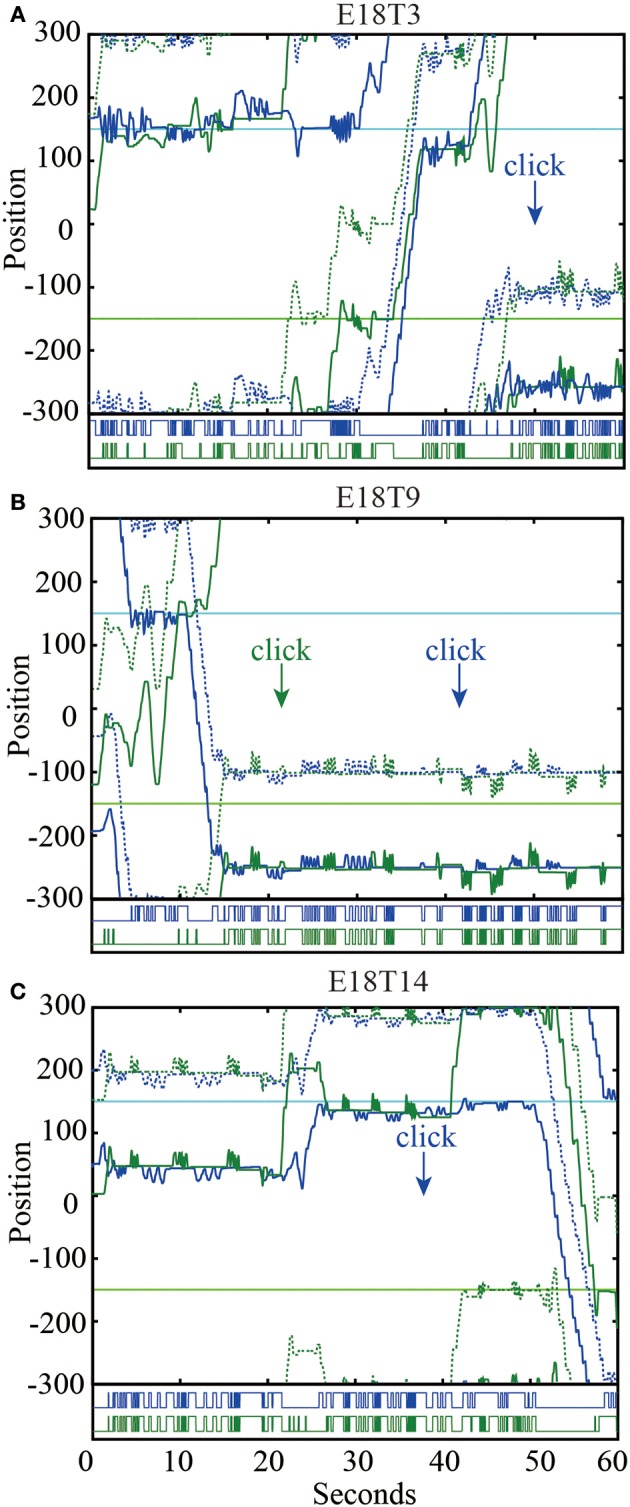Figure 4.

Virtual trajectories over 60 s of three representative trials. Player a (Pa) is shown as blue, while player b (Pb) is green (see Figure 2). Solid and dashed lines represent positions of avatar and shadow objects, respectively. Light blue and light green solid lines show the positions of the static objects detectable by Pa and Pb, respectively. The bottom of each plot shows the haptic feedback (on/off) received by each player. (A) In trial 3 players find each other quickly, but Pb can be seen to break off their interaction. At no point is Pb interacting with the shadow object (a “simple moving object”), but the unexpected irregularity of responses he describes could be attributed to interference caused by Pa's static object. (B) Trial 9 begins with some difficulties as Pb briefly interacts with Pa's shadow object and Pa becomes distracted by his static object. Eventually they find each other and start “receiving and sending” tactile stimuli while adopting either role alternately. Note that their exchanged activity consists of varying frequencies and durations. (C) In trial 14 we see two periods of turn-taking activity. In both cases Pa keeps sending a slow and regular “three-times-signal” while Pb's activity is faster and more irregular. Both times Pb abruptly departs from the interaction after a few exchanges, thus explaining why Pa is left feeling that “the partner ran away during the trial.”
